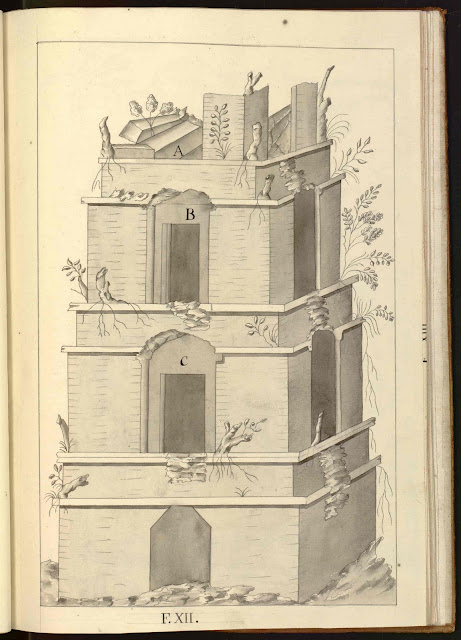 |
| Stucco relief at Palenque, appears on the exterior face of Pier E in House A, part of the central complex of buildings known as the Maya Palace. See below photo to see this same relief nowadays. |
 |
| The reason why this drawings remain scientifically useful. Photo taken in 2008. Reliefs are lost due to ambient exposure. |
Antonio del Río (1745-1789) was a Spanish Captain assigned to the american administrative division in Spanish Imperium which covered much of Central America (including what are now the nations of Costa Rica, Nicaragua, Honduras, El Salvador and Guatemala, and the Mexican state of Chiapas). Del Rio led the first “archaeological exploration” in the Americas. Undertaken in only two months (May-June, 1787), this expedition was performed under direct command of King Carlos III of Spain and originally oriented to investigate the Mayan complex of buildings located in Santo Domingo de Palenque (Ciudad Real de Chiapas, formerly Reyno de Guatemala), known as “the Mayan Palace”.
Antonio del Rio and his expedition spent around 2-3 weeks digging on site and then 4-5 weeks studying and documenting all findings. They made a complete report with around thirty drawings, remarkably accurate, that shows detail of all buildings and bas reliefs that have been lost due to ambient exposure since then. Del Río's manuscript has been preserved in the Museum of Americas in Madrid, Spain, but the drawings were only recently found in a private European collection.



